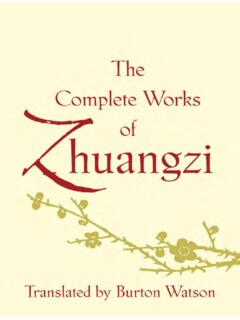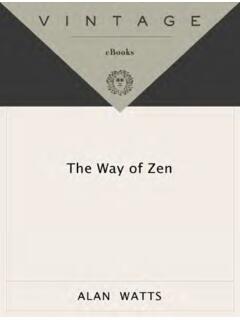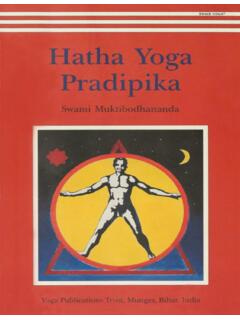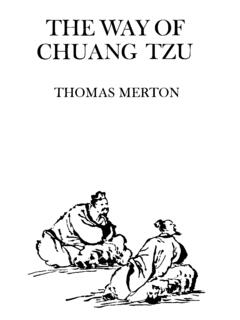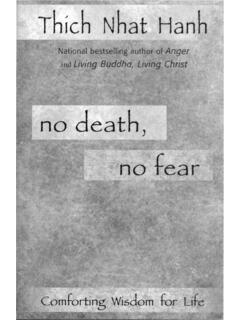Transcription of The Miracle of Mindfulness - Terebess
1 The Miracle of Mindfulness An Introduction to the Practice if Meditation Translated by Mobi Ho Thich Nhat Hanh Translated by Mobi Ho With Eleven Drawings by Vo-Dinh Mai The Miracle of Mindfulness An Introduction to the Practice of Meditation Beacon Press Boston Beacon Press 25 Beacon Street Boston, Massachusetts 02108-2892 Beacon Press books are published under the auspices of the Unitarian Universalist Association of Congregations. 1975, 1976 by Thich Nhat Hanh Preface and English translation 1975, 1976, 1987 byMobiHo Afterword 1976 by James Forest Artwork 1987 by Vo-Dinh Mai All rights reserved Printed in the United States of America 09 08 07 06 05 11 10 9 8 7 The Library of Congress catalogued the previous paperback edition as follows: Nhiit Hanh, Thich. The Miracle of Mindfulness . Translation of Phep la cua su tinh thuc.
2 ISBN 0-8070-1232-7 (cloth) ISBN 0-8070-1239-4 (paper) 1. Meditation (Buddhism) 2. Buddhist meditations. I. Title. 1987 '433 87-42582 Contents Translator's Preface by Mobi Ho vii One The Essential Discipline 1 Two The Miracle Is to Walk on Earth 11 Three A Day of Mindfulness 27 Four The Pebble 33 Five One Is All, All Is One: The Five Aggregates 45 Six The Almond Tree in Your Front Yard 55 Seven Three Wondrous Answers 69 v Exercises in Mindfulness 79 Nhat Hanh: Seeing with the Eyes of Compassion by James Forest 101 Selection of Buddhist Sutras 109 vi Translator's Preface The Miracle of Mindfulness was originally written in Vietnamese as a long letter to Brother Quang, a main staff member of the School of Youth for So-cial Service in South Vietnam in 1974. Its author, the Buddhist monk Thich Nhat Hanh, had founded the School in the 1960s as an outgrowth of "engaged Buddhism.
3 " It drew young people deeply committed to acting in a spirit of compas-sion. Upon graduation, the students used the training they received to respond to the needs of peasants caught in the turmoil of the war. They helped rebuild bombed villages, teach children, set up medical stations, and organize agricultural coopera tives. The workers' methods of reconciliation were often misunderstood in the atmosphere of fear and mistrust engendered by the war. They per-sistently refused to support either armed party vii and believed that both sides were but the reflec-tion of one reality, and the true enemies were not people, but ideology, hatred, and ignorance. Their stance threatened those engaged in the con-flict, and in the first years of the School, a series of attacks were carried out against the students. Several were kidnapped and murdered.
4 As the war dragged on, even after the Paris Peace Ac-cords were signed in 1973, it seemed at times im-possible not to succumb to exhaustion and bitterness. Continuing to work in a spirit of love and understanding required great courage. From exile in France, Thich Nhat Hanh wrote to Brother Quang to encourage the workers dur-ing this dark time. Thay Nhat Hanh ("Thay," the form of address for Vietnamese monks, means "teacher") wished to remind them of the essential discipline of following one's breath to nourish and maintain calm Mindfulness , even in the midst of the most difficult circumstances. Because Brother Quang and the students were his colleagues and friends, the spirit of this long letter that became The Miracle of Mindfulness is personal and direct. When Thay speaks here of village paths, he speaks of paths he had actually walked with Brother Quang.
5 When he mentions the bright eyes of a young child, he mentions the name of Brother Quang's own son. I was living as an American volunteer with the Vietnamese Buddhist Peace Delegation in Paris when Thay was writing the letter. Thay headed the delegation, which served as an over-viii seas liaison office for the peace and reconstruction efforts of the Vietnamese Buddhists, including the School of Youth for Social Service. I remember late evenings over tea, when Thay explained sections of the letter to delegation members and a few close friends. Quite naturally, we began to think of other people in other countries who might also benefit from the practices described in the book. Thay had recently become acquainted with young Buddhists in Thailand who had been in-spired by the witness of engaged Buddhism in Vietnam. They too wished to act in a spirit of awareness and reconciliation to help avert the armed conflict erupting in Thailand, and they wanted to know how to work without being over-come by anger and discouragement.
6 Several of them spoke English, and we discussed translating Brother Quang's letter. The idea of a translation took on a special poignancy when the confiscation of Buddhist publishing houses in Vietnam made the project of printing the letter as a small book in Vietnam impossible. I happily accepted the task of translating the book into English. For nearly three years, I had been living with the Vietnamese Buddhist Peace Delegation, where day and night I was immersed in the lyrical sound of the Vietnamese language. ThaY'had been my "formal" Vietnamese teacher; we had slowly read through some of his earlier books, sentence by sentence. I had thus acquired a rather unusual vocabulary of Vietnamese Buddhist terms. Thay, of course, had been teach-ix ing me far more than language during those three years. His presence was a constant gentle re-minder to return to one's true self, to be awake by being mindful.
7 As I sat down to translate The Miracle of Mind-fulness, I remembered the episodes during the past years that had nurtured my own practice of mind-fulness. There was the time I was cooking fu-riously and could not find a spoon I'd set down amid a scattered pile of pans and ingredients. As I searched here and there, Thay entered the kitchen and smiled. He asked, "What is Mobi looking for?" Of course, I answered, "The spoon! I'm looking for a spoon!" Thay answered, again with a smile, "No, Mobiis looking for Mobi." Thay suggested I do the translation slowly and steadily, in order to maintain Mindfulness . I translated only two pages a day. In the evenings, Thay and I went over those pages, changing and correcting words and sentences. Other friends provided editorial assistance. It is difficult to de-scribe the actual experience of translating his words, but my awareness of the feel of pen and paper, awareness of the position of my body and of my breath enabled me to see most clearly the Mindfulness with which Thay had written each word.
8 As I watched my breath, I could see Brother Quang and the workers of the School of Youth for Social Service. More than that, I began to see that the words held the same personal and lively directness for any reader because they had been x written in Mindfulness and lovingly directed to real people. As I continued to translate, I could see an expanding community-the School's work-ers, the young Thai Buddhists, and many other friends throughout the world. When the translation was completed we typed it, and Thay printed a hundred copies on the tiny offset machine squeezed into the dele-gation's bathroom. Mindfully addressing each copy to friends in many countries was a happy task for delegation members. Since then, like ripples in a pond, The Miracle of Mindfulness has traveled far. It has been trans-lated into several other languages and has been printed or distributed on every continent in the world.
9 One of the joys of being the translator has been to hear from many people who have discov-ered the book. I once met someone in a bookstore who knew a student who had taken a copy to friends in the Soviet Union. And recently, I met a young Iraqi student in danger of being deported to his homeland, where he faces death for his refusal to fight in a war he believes cruel and senseless; he and his mother have both read The Miracle of Mindfulness and are practicing awareness of the breath. I have learned, too, that proceeds from the Portuguese edition are being used to as-sist poor children in Brazil. Prisoners, refugees, health-care workers, educators, and artists are among those whose lives have been touched by this little book. I often think of The Miracle of Mind-xi fulness as something of a Miracle itself, a vehicle that continues to connect lives throughout the world.
10 American Buddhists have been impressed by the natural and unique blending of Theravada and Mahayana traditions, characteristic of Vietnamese Buddhism, which the book expresses. As a book on the Buddhist path, The Miracle of Mindfulness is special because its clear and simple emphasis on basic practice enables any reader to begin a practice of his or her own immediately. Interest in the book, however, is not limited to Buddhists. It has found a home with people of many different religious traditions. One's breath, after all, is hardly attached to any particular creed. Those who enjoy this book will likely be in-terested in other books by Thich Nhat Hanh which have been translated into English. His books in Vietnamese, including short stories , novels, es-says, historical treatises on Buddhism and poetry, number in the dozens.

